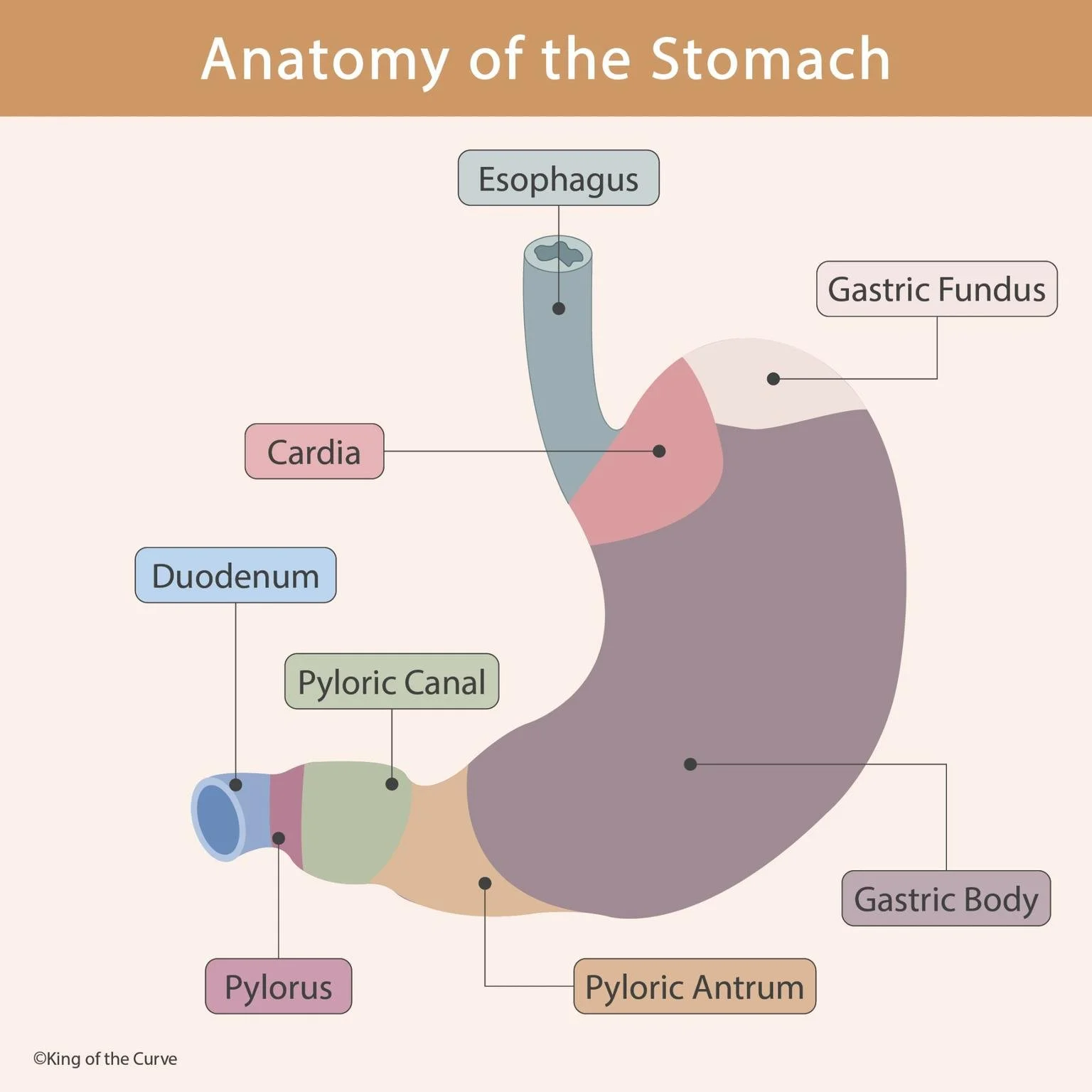🧠 Anatomy of the Stomach: MCAT-Ready Visual Breakdown
When it comes to MCAT anatomy, students often focus on the brain, heart, and kidneys—leaving the digestive system underestimated. But knowing the parts of the stomach and their functions is essential for mastering gastrointestinal physiology, nutrition, and pathology.
🍽️ Why the Stomach Matters for the MCAT
The AAMC expects you to:
Understand digestive tract anatomy
Recognize functional regions of the stomach
Connect form to physiological function (e.g., enzyme secretion, mechanical digestion)
This is especially relevant in Biological & Biochemical Foundations of Living Systems.
🧬 Key Regions of the Stomach
1. Esophagus
Delivers food from the pharynx to the stomach
Connects to stomach at the cardia
2. Cardia
Where esophagus empties into the stomach
Guards against acid reflux via the lower esophageal sphincter
3. Gastric Fundus
Upper curvature of the stomach
Stores undigested food and gases released during digestion
4. Gastric Body
Largest section
Major site of acid (HCl) and pepsinogen secretion
5. Pyloric Antrum
Initiates mechanical digestion
Begins regulating chyme flow into the small intestine
6. Pyloric Canal
Funnels partially digested food toward the pylorus
Narrowest part before the valve
7. Pylorus
Acts as a muscular gatekeeper between the stomach and duodenum
Coordinates gastric emptying
8. Duodenum
First part of the small intestine
Begins chemical digestion via pancreatic enzymes and bile
🧠 MCAT Tip: Function is Tied to Form
On the MCAT, always think in systems:
Example:
If a passage discusses delayed gastric emptying, ask:
“What region controls this?” → ✅ Pylorus + Pyloric Canal
🔁 Stomach Summary Table
| Region | Function |
|---|---|
| Cardia | Entry point; anti-reflux barrier |
| Fundus | Storage of gases and undigested food |
| Body | Main digestive section (HCl, enzymes) |
| Antrum | Churning and breakdown of food |
| Pyloric Canal | Passageway toward duodenum |
| Pylorus | Controls food release into small intestine |
✅ Final Takeaways
The stomach is anatomically segmented for specialized tasks
The MCAT may test anatomy or function-based pathology (e.g., ulcers, GERD, H. pylori)
Use visuals like this to master both structure and integration
📲 Study Smarter with King of the Curve
Crush MCAT anatomy with:
🎯 Daily QOTDs
🧩 Gamified learning
📘 Adaptive science flashcards
🖼 1,000+ medical illustrations
👉 Start for Free
👉 Visual Library Access
👉 MCAT Digestive System Qbank
Frequently Asked Questions (FAQs)
-
Aim for 4-6 focused hours, ensuring you incorporate breaks to avoid burnout.
-
Practice mindfulness techniques, take practice exams under realistic conditions, and maintain a balanced lifestyle.
-
Set short-term goals, seek support from mentors, and reward yourself for small achievements.
-
Regular exercise improves focus, reduces stress, and enhances overall mental clarity.
-
KOTC offers personalized learning tools, gamification features, and adaptive question banks to help students stay on track without burnout.


